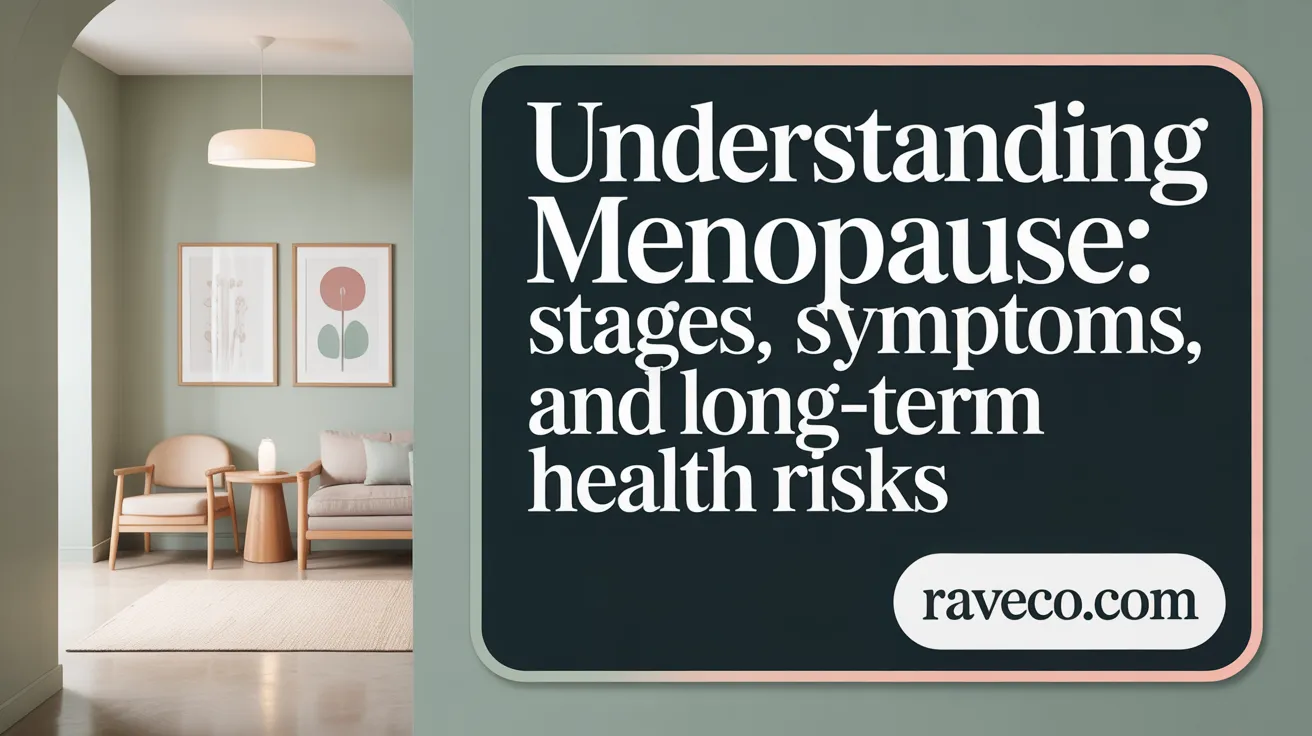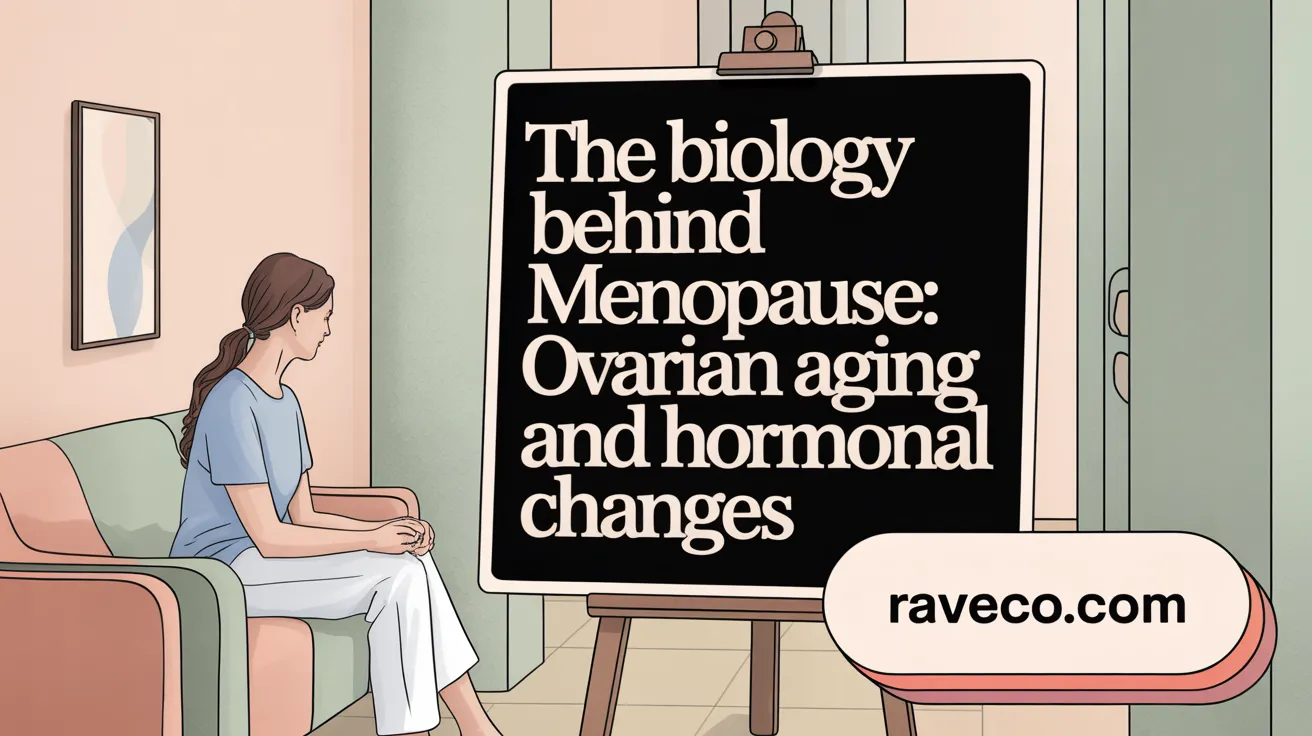Celebrating Courage: 8 Powerful Testimonials of Women's Gynecological Health Triumphs

Introduction to Menopause
Menopause marks a significant biological transition in a woman’s life, characterized by the end of menstruation and a natural decline in reproductive hormones. This phase, encompassing perimenopause, menopause, and postmenopause, affects millions worldwide and manifests through a diverse range of symptoms and health challenges. Recognizing these changes and exploring effective strategies—from lifestyle adaptations to medical treatments—empowers women to navigate menopause with confidence and improved well-being.
What is Menopause? Defining the Stages, Symptoms, and Health Implications

Menopause is a natural phase in a woman's life that indicates the end of her reproductive years. It is officially diagnosed after 12 consecutive months without a menstrual period, usually occurring around age 51 in the United States (Average age of menopause in the US). Menopause unfolds in three interconnected stages (Stages of Menopause). The first stage, perimenopause, often begins several years prior to menopause, typically in the mid-30s to early 50s (Perimenopause Overview). During this period, ovarian hormone production fluctuates unpredictably, causing irregular menstrual cycles, hot flashes, night sweats, and mood swings (Menopause symptoms and causes). As hormone levels like estrogen and progesterone decline, women experience various symptoms (Menopause and Hormonal Changes). The second stage is menopause itself, the point at which periods have ceased for a full year, marking the official end of fertility (Duration of menopause symptoms). The final stage, postmenopause, comprises the years following menopause, during which symptoms may persist, but the focus shifts to managing long-term health risks (Postmenopause health risks). Common signs include hot flashes—sudden feelings of heat with sweating—sleep disturbances, vaginal dryness, and mood changes (Menopause Symptoms). These symptoms primarily result from falling estrogen levels (Hormonal Changes in Menopause). Besides physical discomfort, menopause significantly impacts health. Reduced estrogen increases the risk of osteoporosis, a condition where bones become brittle and prone to fractures (Bone Loss and Osteoporosis in Menopause). Heart health is also affected, with a heightened risk of cardiovascular disease due to changes in cholesterol levels and blood vessel health (Menopause and Cardiovascular Risks). Urinary problems, including urgency and incontinence, may also arise (Menopause and Urinary Issues). Managing these health challenges involves hormone therapy (Hormone Therapy for Menopause), lifestyle changes like diet and exercise (Managing Menopause Symptoms), and nonhormonal medications (Non-Hormonal Menopause Treatments). Understanding the stages, symptoms, and health implications of menopause enables women to prepare and seek appropriate care, maintaining quality of life during this natural transition.
Recognizing Common and Lesser-Known Symptoms of Menopause

What are common and lesser-known symptoms of menopause, and how can one recognize them?
Menopause is often associated with well-known signs such as hot flashes, night sweats, and irregular periods. Hot flashes are sudden sensations of heat that start in the chest and spread to the face and neck, often accompanied by sweating — these affect up to 80% of women and can last for several years.
Lesser-known symptoms sometimes include cognitive issues like brain fog, which manifests as forgetfulness, difficulty concentrating, and mental sluggishness. Women may also experience sensory changes such as dry eyes, a burning mouth sensation, or decreased saliva production.
Physical changes can include dry, thinning skin, brittle nails, increased body odor, and tinnitus, which is ringing in the ears. Hormonal fluctuations during perimenopause and menopause may also cause joint pain, increased body odor, and even changes in taste perception.
Recognizing these symptoms involves paying attention to both physical and emotional changes. Irregular or skipped periods often serve as an initial sign, but persistent hot flashes, especially those lasting beyond a year, are strongly indicative.
Furthermore, symptoms like dry eyes, burning mouth, and facial hair growth (hirsutism) might seem unrelated but are linked to hormonal changes affecting various tissues.
To confirm menopause, healthcare providers typically consider the pattern of symptoms, menstrual history, and may perform hormone level tests such as measuring follicle-stimulating hormone (FSH) and estradiol. Awareness of both common and lesser-known symptoms enables women to seek timely medical advice and manage their menopausal transition effectively. See more on menopause diagnosis and symptom management.
Biological Causes and Processes Underlying Menopause

Menopause is a natural biological process that signifies the end of a woman’s reproductive years. It primarily results from the gradual decline and eventual exhaustion of ovarian follicles, which are clusters of immature eggs within the ovaries. For a detailed overview of Menopause, see resources on Signs of Menopause and Stages of Menopause.
As women age, the number of functional ovarian follicles decreases due to natural atresia. This reduction impairs the ovaries' ability to produce adequate levels of key reproductive hormones such as estrogen, inhibin B, and anti-Müllerian hormone (AMH). The significant decline in these hormones leads to the cessation of ovulation and menstrual periods, commonly around the median age of 51, as described under Average age of menopause in the US.
The hormonal decline results in a disruption of the hypothalamic-pituitary-ovarian (HPO) axis. Normally, the ovaries produce estrogen and progesterone, which feedback to the hypothalamus and pituitary gland to regulate the menstrual cycle. As ovarian function diminishes, ovaries produce less estrogen and progesterone, prompting the hypothalamus and pituitary to increase secretion of gonadotropins—specifically follicle-stimulating hormone (FSH) and luteinizing hormone (LH). Elevated FSH and LH levels are characteristic markers of menopause and are used in menopause diagnosis.
The decrease in estrogen levels is responsible for many systemic effects, including vasomotor symptoms such as hot flashes and night sweats, genitourinary changes like vaginal dryness, and mood disturbances (Menopause-Related Mood Changes). Additionally, estrogen deficiency accelerates bone resorption, leading to decreased bone mineral density and increased risk of osteoporosis and fractures, as discussed under Bone Loss and Osteoporosis in Menopause and Osteoporosis and menopause.
Various factors influence the timing of menopause. Genetics play a significant role, with age at menopause often running in families. Lifestyle factors such as smoking and nutritional habits can also affect menopause timing; for example, smoking is associated with earlier menopause. Autoimmune conditions and medical treatments—including ovarian surgery, radiation therapy, or chemotherapy—can induce premature or earlier menopause. For more information, see Risk factors for menopause and Premature menopause causes.
In essence, menopause reflects a complex interplay of physiological aging processes and environmental influences affecting ovarian reserve and hormonal regulation. These biological changes underpin the broad spectrum of symptoms and health implications associated with menopause. For comprehensive resources on management and symptoms, consult Managing Menopause Symptoms and Hormone Therapy for Menopause.
Lifestyle and Self-Care Strategies for Managing Menopause Symptoms

Managing menopause symptoms often involves a combination of lifestyle and self-care strategies that can significantly improve comfort and quality of life. For comprehensive guidance, see Managing menopause symptoms.
One of the most effective approaches is incorporating regular physical activity. Women are encouraged to engage in weight-bearing exercises, such as walking, jogging, or dancing, which strengthen bones and help prevent osteoporosis—a common concern post-menopause. Combining aerobic activities with resistance training not only supports bone health but also enhances cardiovascular fitness and mood. Learn more about Exercise and menopause symptoms and Physical Activity Benefits.
Diet also plays a vital role. Consuming a balanced diet rich in calcium, vitamin D, and phytoestrogens can support bone density and hormone balance. Foods like leafy greens, dairy products, soy, flaxseeds, and nuts are beneficial. Limiting intake of caffeine, spicy foods, alcohol, and processed sugars can help reduce hot flashes and night sweats. Staying well-hydrated with plenty of water helps alleviate vaginal dryness and skin issues. For detailed tips, refer to Dietary tips for menopause and Nutrition and diet for menopause.
Stress reduction techniques are highly recommended to combat mood swings and anxiety. Practices such as yoga, meditation, deep breathing exercises, and mindfulness can promote relaxation and emotional stability. See Mind- and body-based therapies and Managing menopause symptoms with lifestyle changes.
Avoiding known triggers for menopausal symptoms is crucial. Spicy foods, caffeine, alcohol, and smoking are common culprits that can intensify hot flashes and sleep disturbances. Creating a cool, comfortable sleeping environment, dressing in breathable fabrics, and practicing good sleep hygiene improve rest quality. For more details, see Lifestyle changes for menopause and Things you can do for menopause.
For vaginal dryness and discomfort, self-care includes using over-the-counter lubricants and moisturizers, and seeking medical advice for prescription treatments like vaginal estrogen if needed. Regular pelvic floor exercises can also strengthen muscles and improve urinary health. See Managing vaginal dryness and Pelvic floor exercises after menopause.
Lastly, consulting healthcare providers is essential. They can recommend appropriate medications, supplements, or hormone therapies tailored to individual health profiles. For comprehensive treatment options, see Menopause treatment options and Hormone therapy for menopause. These combined strategies help women manage menopause symptoms effectively, fostering well-being during this natural life stage.
Medical Treatments for Menopause: Hormone Therapy and Alternatives

What medical treatment options are available for menopause, including hormone therapy and nonhormonal alternatives?
Menopause is often managed with a variety of medical treatments tailored to individual health needs and symptom severity. The most effective and commonly used treatment is hormone replacement therapy (HRT). HRT involves supplementing declining hormone levels, typically estrogen alone for women who have had a hysterectomy, or a combination of estrogen and progesterone for women with an intact uterus. This therapy provides significant relief from vasomotor symptoms such as hot flashes and night sweats, and also supports bone density, thereby reducing osteoporosis risk.
While traditional HRT is highly effective, some women cannot or prefer not to use hormonal therapy. For these individuals, nonhormonal medications are available. These include selective serotonin reuptake inhibitors (SSRIs) like paroxetine, serotonin-norepinephrine reuptake inhibitors (SNRIs) such as venlafaxine, as well as gabapentin and clonidine, which are medications originally designed for other conditions but have proven helpful in reducing hot flashes. Emerging options like neurokinin-3 receptor antagonists, notably fezolinetant, target the neural mechanisms that trigger vasomotor symptoms, offering a nonhormonal approach.
Complementary therapies also play a role, with cognitive behavioral therapy, acupuncture, and lifestyle modifications—such as dressing appropriately, avoiding triggers like spicy foods and alcohol, and engaging in regular exercise—providing additional symptom relief. Though evidence for these approaches varies, they can be valuable adjuncts or alternatives for women seeking holistic management.
Each woman’s treatment plan should be personalized, considering overall health, risks, and preferences. Healthcare providers evaluate factors like age, history of cancer, cardiovascular risks, and severity of symptoms to recommend the most suitable options. Regular follow-up ensures effective management and addresses any side effects or concerns, making menopause management a comprehensive and individualized process.
Natural Remedies and Herbal Treatments for Menopause Symptom Relief
Many women seek natural remedies for menopause symptom relief and herbal treatments for menopause to ease menopausal symptoms such as hot flashes, night sweats, mood swings, and sleep disturbances. Several herbs have been studied for their potential benefits. For example, black cohosh is often used to reduce hot flashes and improve sleep, while red clover and soy are rich in phytoestrogens—plant compounds that mimic estrogen and may provide mild symptom relief. Evening primrose oil, ginseng, sage, and valerian are also popular choices, targeting issues like irritability, mood changes, and sleep problems.
Dietary sources of phytoestrogens include soybeans, tofu, flaxseed, sesame seeds, and certain grains and vegetables. Incorporating these foods into the diet can offer a gentle, natural way to support hormone balance, though scientific evidence on their effectiveness remains mixed (managing menopause symptoms with nutrition and diet).
Safety considerations are important when using herbal remedies. They are not regulated as strictly as pharmaceuticals, meaning the quality, purity, and potency can vary. Some herbs may cause side effects or interact with prescribed medications, so it is prudent to consult a healthcare provider before starting any herbal supplement.
Besides herbs and diet, lifestyle strategies play a vital role in managing menopause naturally. Regular exercise not only boosts overall health but also reduces hot flashes and improves mood. A balanced diet rich in fruits, vegetables, whole grains, and healthy fats supports hormonal health. Stress reduction techniques like yoga, meditation, and deep-breathing exercises can help lower anxiety and improve sleep (things you can do to manage menopause).
While herbal treatments can be part of a holistic approach, they should complement, not replace, medical advice and proven therapies. Combining lifestyle modifications with safe herbal remedies offers a sustainable, personalized way to navigate menopause with fewer discomforts and enhanced well-being.
Supporting Health Through Diet, Lifestyle, and Emerging Therapies
How do diet, nutrition, and lifestyle changes support health during menopause?
During menopause, adopting a balanced diet rich in calcium, vitamin D, lean proteins, whole grains, fruits, and vegetables plays a vital role in maintaining bone and heart health. As estrogen levels decline, women become more susceptible to osteoporosis and cardiovascular disease, making nutrient intake crucial. For more information, see Staying Healthy During Menopause and Managing menopause symptoms.
Incorporating physical activity, such as weight-bearing exercises, resistance training, and aerobic activities, helps manage weight, build bone density, and boost mood. Regular movement reduces the risk of osteoporosis fractures and improves overall well-being. Nutrition and physical activity recommendations are detailed in Lifestyle changes for menopause and Managing Menopause Symptoms with Nutrition and Diet.
Limiting processed foods, excess sugars, saturated fats, dietary sodium, caffeine, and alcohol can alleviate menopausal symptoms like hot flashes and sleep disturbances. These dietary adjustments promote cardiovascular health, reduce inflammation, and enhance sleep quality. For dietary tips and natural menopause symptom relief, consult 11 Natural Menopause Tips and Natural Remedies for Menopause Symptom Relief.
Stress management techniques, maintaining good sleep hygiene, and avoiding smoking further decrease health risks associated with menopause. Together, these lifestyle and dietary modifications support a healthier, more balanced life during this transitional phase. Evidence on lifestyle and behavioral modifications is summarized in Lifestyle and behavioural modifications for menopausal symptoms and Managing menopause at home.
What emerging technologies and nonhormonal interventions are available for menopause symptom relief?
Innovative therapies are expanding options beyond traditional hormone replacement therapy. Neurokinin-3 receptor antagonists such as fezolinetant have shown promise by targeting brain pathways involved in temperature regulation, effectively reducing hot flashes without hormonal use. See Fezolinetant for vasomotor symptoms and Nonhormonal Menopause Management.
Advances in medical devices like vaginal lasers offer nonhormonal solutions for genitourinary atrophy and dryness, providing relief for vaginal discomfort and urinary issues. Information on vaginal treatments and genitourinary syndrome is available at Managing Menopause Symptoms and Menopausal Hormone Therapy.
Pharmacological agents such as selective serotonin reuptake inhibitors (SSRIs) like paroxetine and serotonin-norepinephrine reuptake inhibitors (SNRIs) such as venlafaxine and duloxetine are supported by evidence for their ability to modestly diminish vasomotor symptoms. For more on nonhormonal medication options, review Non-Hormonal Menopause Treatments and Non-estrogen treatments for menopausal symptoms.
Procedures like stellate ganglion blockade are under research for hot flash reduction, although safety and long-term effectiveness are still being studied (AAFP 2023 Guidance).
Additionally, mind-body therapies—including cognitive-behavioral therapy, guided imagery, hypnosis, and structured breathing exercises—support mental health, reduce stress, and may decrease hot flash severity. Evidence and guidance on these approaches are provided in Cognitive Behavioral Therapy for Menopause, Hypnotherapy for menopause, and Lifestyle and Behavioural Modifications for Menopausal Symptoms.
What resources and support are available for women navigating menopause and related health issues?
Women facing menopause can turn to a network of healthcare providers specializing in women’s health, including gynecologists and menopause experts, for tailored management plans. For guidance on consulting healthcare providers, see Questions for healthcare providers and Consulting with menopause specialists.
Educational resources from organizations such as The Menopause Society and Society for Women’s Health Research provide comprehensive information on symptoms, treatment options—including both hormonal and nonhormonal remedies—and lifestyle strategies. Access detailed patient education at The North American Menopause Society and Society for Women’s Health Research.
Support groups, both local and online, offer peer connections for shared experiences and emotional support. Many community centers and health institutions host menopause cafés and educational seminars. Resources on community support and peer groups can be found at Menopause Cafés and Community Support.
Online platforms like MedlinePlus and governmental health agencies provide up-to-date research, guidelines, and patient education materials. These resources empower women to make informed decisions, advocate for their health, and access appropriate care, ensuring a supported transition through menopause. Examples include MedlinePlus Menopause Overview, NHS Menopause Resources, and Women’s Health.gov Menopause Information.
Embracing Menopause with Knowledge and Confidence
Menopause is a unique, multifaceted life stage that brings a variety of symptoms and health considerations influenced by biological, lifestyle, and environmental factors. Understanding the stages and recognizing the diverse symptoms empower women to seek appropriate care and make informed health decisions. A combination of lifestyle modifications, natural remedies, and evidence-based medical treatments—including hormone therapy and emerging nonhormonal options—offers effective strategies to alleviate symptoms and improve quality of life. Accessing supportive resources and healthcare guidance ensures personalized management, enabling women to navigate menopause with confidence and embrace this natural transition as an opportunity for renewed wellness and empowerment.





.png)